Short of going to Greenland, pretty much the farthest east you can travel in North America is St. John’s. But Newfoundland and Labrador’s capital is much more than just a geographic marker.
At 500 years old, the city’s historic downtown hugs the harbor and is known for its distinct architecture and colorful homes. The best way to explore the city’s core is on foot, so those arriving by car are advised to park somewhere and prepare for some vigorous walking. Made up of mostly hills and with roads that curve and undulate, it’s no San Francisco, but at points, it can feel like trying to hike up a wall.
Newfoundland and Labrador’s prosperity has always been tied to the ocean, first with fish and now oil, and the drop in oil prices in the last few years has hurt the local economy. Still, a few entrepreneurial gems continue to flourish in a city that punches above its weight when it comes to cultural offerings.
Here’s a guide to spending the perfect day in Canada’s easternmost.
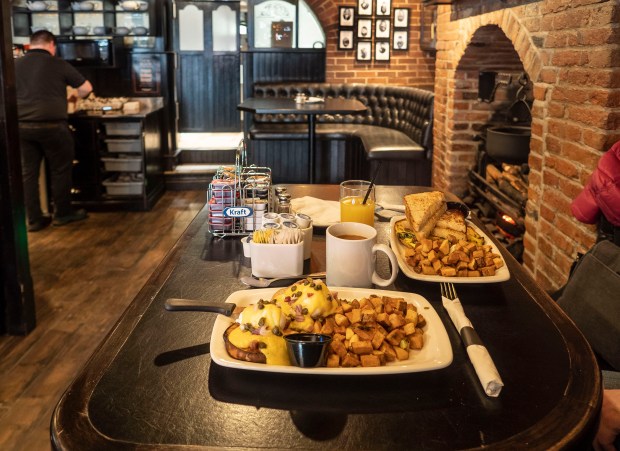
Start the day with a late breakfast at the Celtic Hearth, an Irish-style pub on Water Street. Its dramatic bright red and black front is part of a building that dates back about 150 years. Inside, historic photos and cabinetry that wouldn’t look out of place in an old apothecary line the walls. Dig into the strawberry french toast stack, or if you want something lighter, try the chicken and spinach frittata.
Right behind the Celtic Hearth is George Street, a stretch that is said to have the most bars per capita in Canada. Teeming with clubs and pubs, at night the small street comes alive with the sounds of rock, jazz, and traditional Newfoundland music. Later in the evening, some of these bars will be busy hosting Screech-ins: a ritual in which mainlanders are made honorary Newfoundlanders through babbling a near-incomprehensible recitation of local expressions, enduring a shot of Screech rum, and kissing a cod.
This also puts you right next to Rocket Bakery. This spot possesses a turn-of-the-century charm, though it opened only in 2011. Behind the deli counter are fresh food, locally made jams, and a plethora of baked sweets. Try the almond croissants, or buy some lemon tarts and the Earl Grey and lavender macarons and save them for later.
The Basilica Cathedral of St. John the Baptist is one of St. Johns’ most imposing structures. Ornate stained-glass windows display the wealth and power the Catholic Church once held in the city. But if Romanesque architecture isn’t for you, the Gothic revival Anglican Cathedral of St. John the Baptist is just a stone’s throw away. Both churches are named for the city’s eponymous saint. The Anglican house of worship was designed by renowned architect George Gilbert Scott. It was extensively damaged by the Great Fire of 1892, which leveled two-thirds of the city.
Next door, the Rooms evokes memories of traditional Newfoundland fishing villages. The museum, gallery, and archives deserve several hours to explore. But if you’re time’s limited, don’t miss the “Beaumont-Hamel and the Trail of the Caribou” exhibit. It’s a sobering exploration of the impact the World War I had on the Dominion of Newfoundland: On July 1, 1916, the Royal Newfoundland Regiment—more than 300 soldiers—was virtually wiped out in 20 minutes of German machine gun fire.
Stop for lunch on the top floor at the Rooms Café and take in the expansive view of the city below. Try the roasted chicken panini, which has gooey cheese, sharp mustard, and spinach.
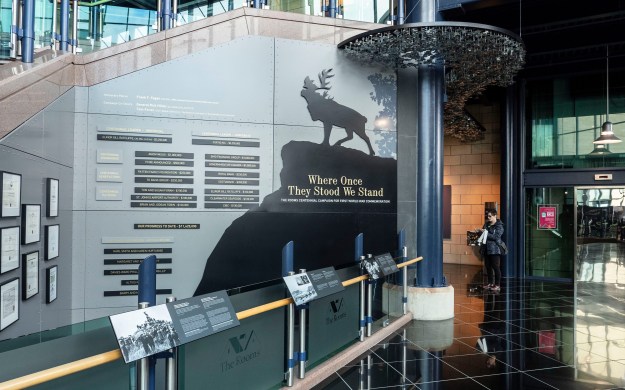
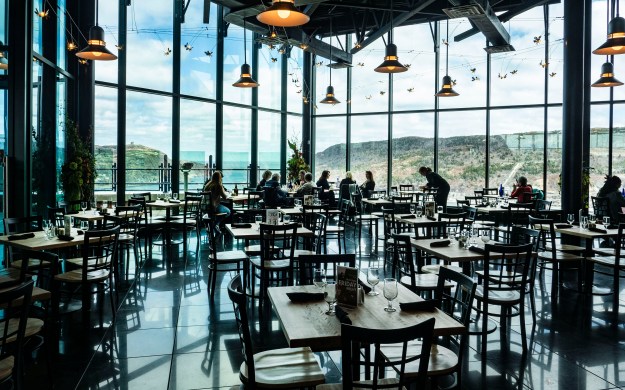
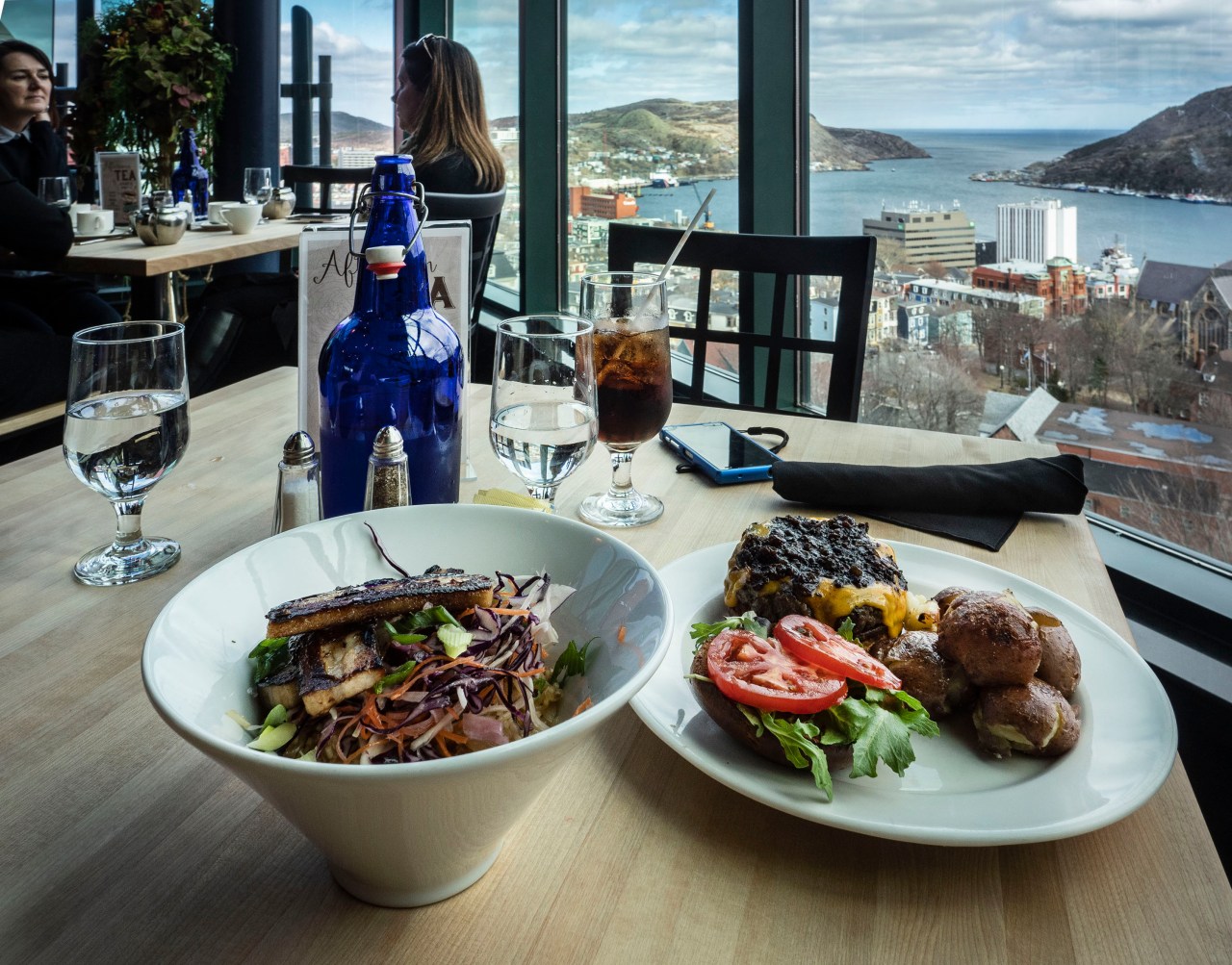
Now it’s back to wandering the Rooms, where you can check out the remains of a giant squid, the extinct great auk, and a fossil that dates back 560 million years. The museum’s wings explore the history of the island and its various inhabitants, from aboriginal people to the European settlers who fought to control the island and its rich resources. There’s also an art gallery that hosts traveling exhibitions and showcases new artists and installations.
After you leave the Rooms, wander through the neighborhood’s side streets—St. John’s is small enough that it’s hard to get lost. Check out the eye-catching color schemes—a splash of pinks, reds, yellows, and blues—of the homes on Jellybean Row. There’s no one Jellybean Row, though—also locals for directions and you’ll be referred to up to five different strings of houses.
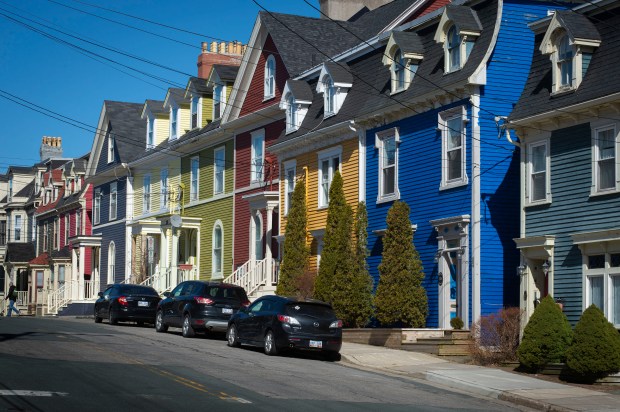
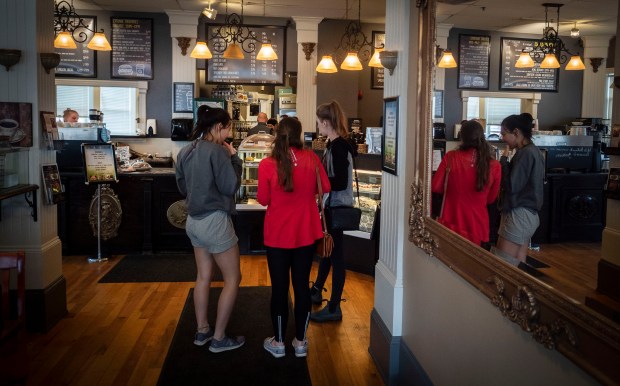
If you need a little pick-me-up, head over to Coffee Matters and try the almond zen latte. The café also has an assortment of delicious fresh baked goods, soups, and sandwiches. It’s a popular place for meet-ups, especially for students from Memorial University, and is a great spot for people watching. Alternatively, get your drink to go and head over to Bannerman Park just around the corner.
Recently revitalized, Bannerman Park has plenty of benches as well as the Loop, an outdoor ice skating trail that’s in the winter. Check out the surrounding landmarked heritage homes and the neoclassical Colonial Building. Once the seat of Newfoundland’s government, it has been closed for years for repairs.
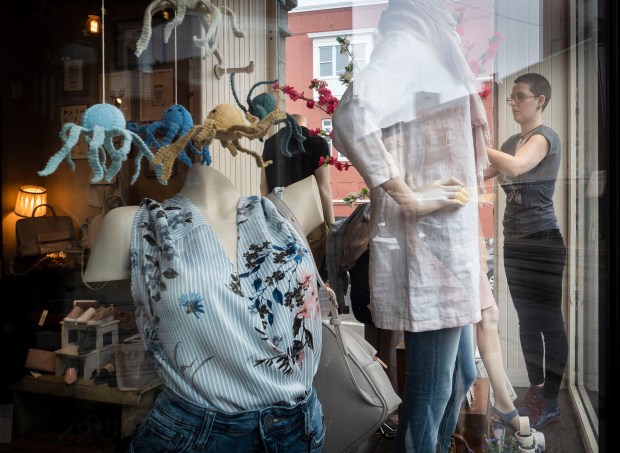
Backtrack to Water Street and head to Johnny Ruth & Living Planet, two stores that teamed up a few years ago and now share a spot in the open, industrial space offering up fashionable clothes and gifts, including local prints
Now head up to Duckworth Street and take in it’s quirky Posie Row, a row of shops painted rainbow colors. Visit the historic Tobin Building, where on each floor, boutiques occupy what used to be Victorian era bedrooms and parlors. Knitters, head to the third floor to buy some yarn from Cast On! Cast Off! Or climb to the top floor to reach Dead Issue, a rock boutique, and get a print of Godzilla rampaging through Water Street.
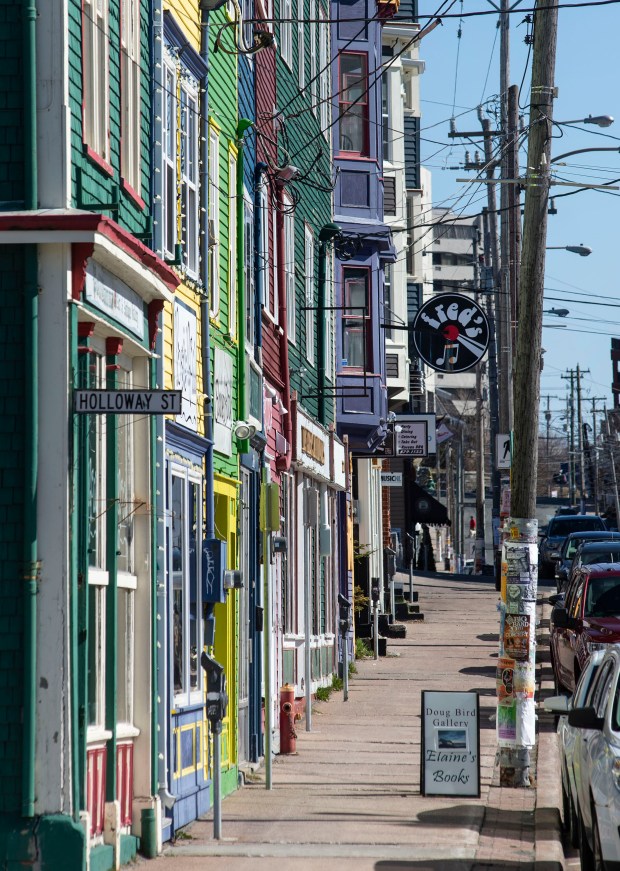
A few doors down is Fred’s Records, which has been around for more than 40 years. This is the place to flick through a selection of vinyl and learn about upcoming concerts. Then stock up on goodies at the Newfoundland Chocolate Co.—if it’s summertime, try the gelato. Its chocolate features local ingredients like bakeapples, partridgeberries, and blueberries.
Pi Gourmet Eatery serves the best pizza in town, with toppings like chutney, fennel, and caramelized pear. The inside decor is a clash of red and green walls, and along the ceiling, you can follow the stenciled stream of the digits for π. In line with the mathematical theme, the pizzas are named after greats of the discipline, including Fibonacci, Archimedes, and Pythagoras (they’re all good).
If you’re up for some more walking, hike to the top of Signal Hill for a spectacular view of St. John’s. Perched at the very top overlooking the harbor is Cabot Tower. Built in 1900 to commemorate John Cabot’s discovery of Newfoundland, it looks like a miniature stone Gothic castle and is the quintessential Newfoundland landmark. It’s also the spot where Italian inventor Guglielmo Marconi received the first trans-Atlantic wireless signal, in 1901.
From there, you can hear the foghorns and see the ships coming into the harbor and the bright dots that make up Jellybean Row. Maybe pull out that bag of treats from Rocket Bakery as you sit along the concrete wall and enjoy the view as the day comes to a close, listening to the waves crashing below.
